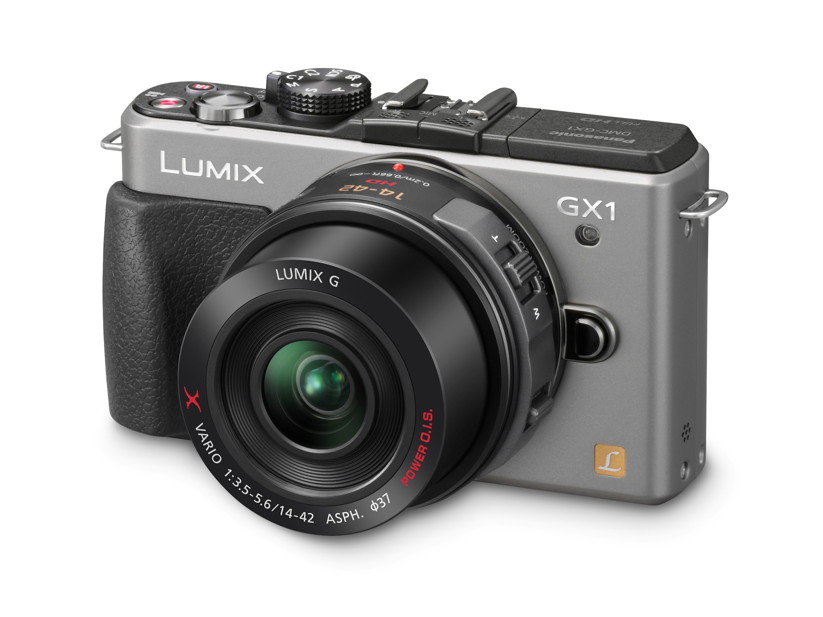Why you can trust TechRadar
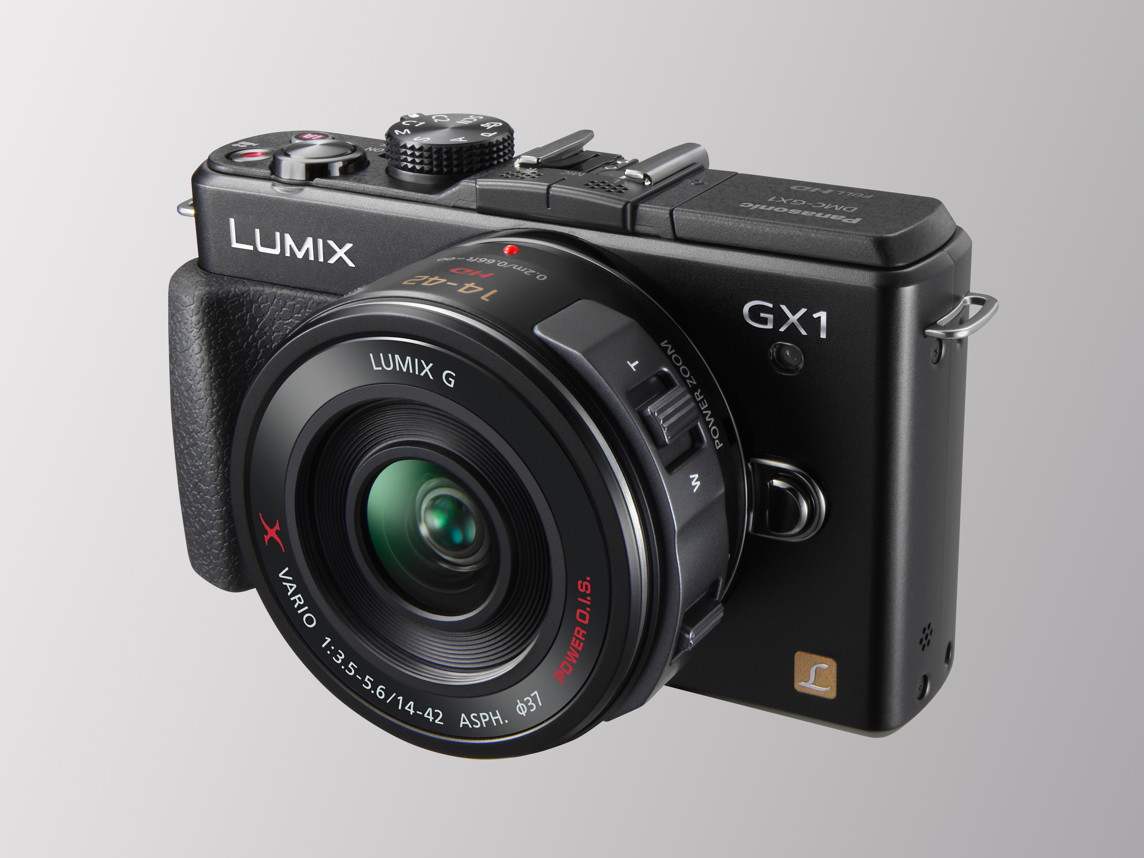
Whereas its G-series predecessors adopted a DSLR-style design, the Panasonic Lumix DMC-GX1 sports a more rangefinder-esque silhouette. Its clean, straight lines and metal body add a sleek look to this compact, sturdy-feeling camera, while the 14-42mm powered kit lens feels well-balanced.
Its ergonomically-shaped, rubberised front grip pairs with a smoothly sculpted rear thumb pad to provide a comfortable and secure grasp on the reassuringly weighty body.
The clean front panel sports nothing more than a smattering of tasteful logos, a bright AF-assist lamp and lens release button. The lens itself is compact and lightweight.
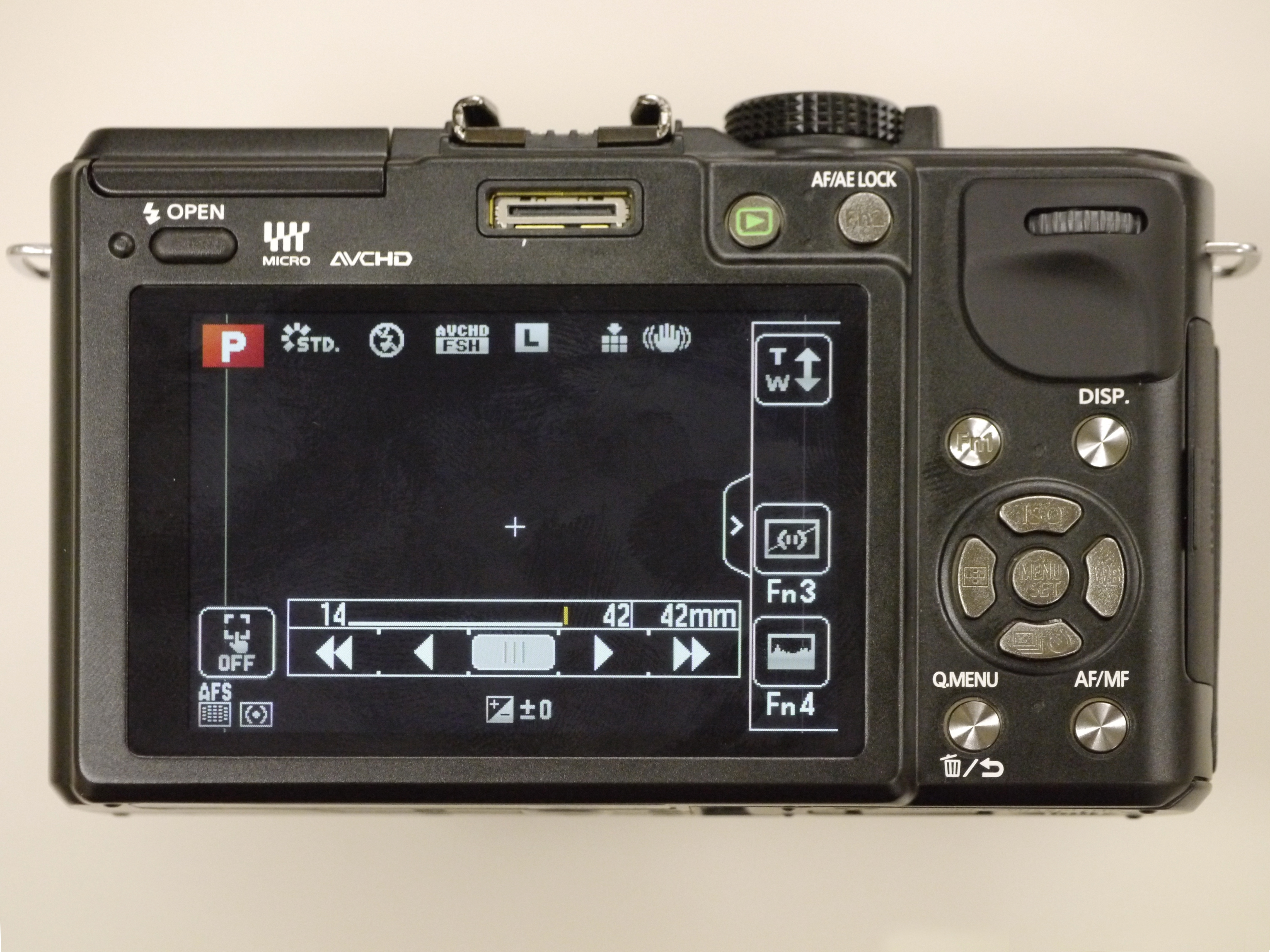
On the left-hand side of the lens barrel are two controls: one to zoom in and out and another to focus manually. To the photographer who's used to operating manual lenses for zooming and focusing, this method feels a little alien at first, although those upgrading from a compact camera are likely to feel more at home with this setup.
For us, although this powered lens does mean that the portability of the Panasonic Lumix DMC-GX1 is sustained, it slows down zooming and focusing somewhat in comparison to working with a manual equivalent. If this is an issue for you, go for the non-powered option.
The top panel houses a red and silver button providing direct access to the Panasonic Lumix DMC-GX1's HD movie mode, alongside an iA (intelligent Auto) mode button that glows blue when activated. The latter control gives you fast access to the camera's fully-automatic exposure mode, regardless of the option that you have selected on the mode dial at the time: press it once to activate it and again to revert back to your original mode.
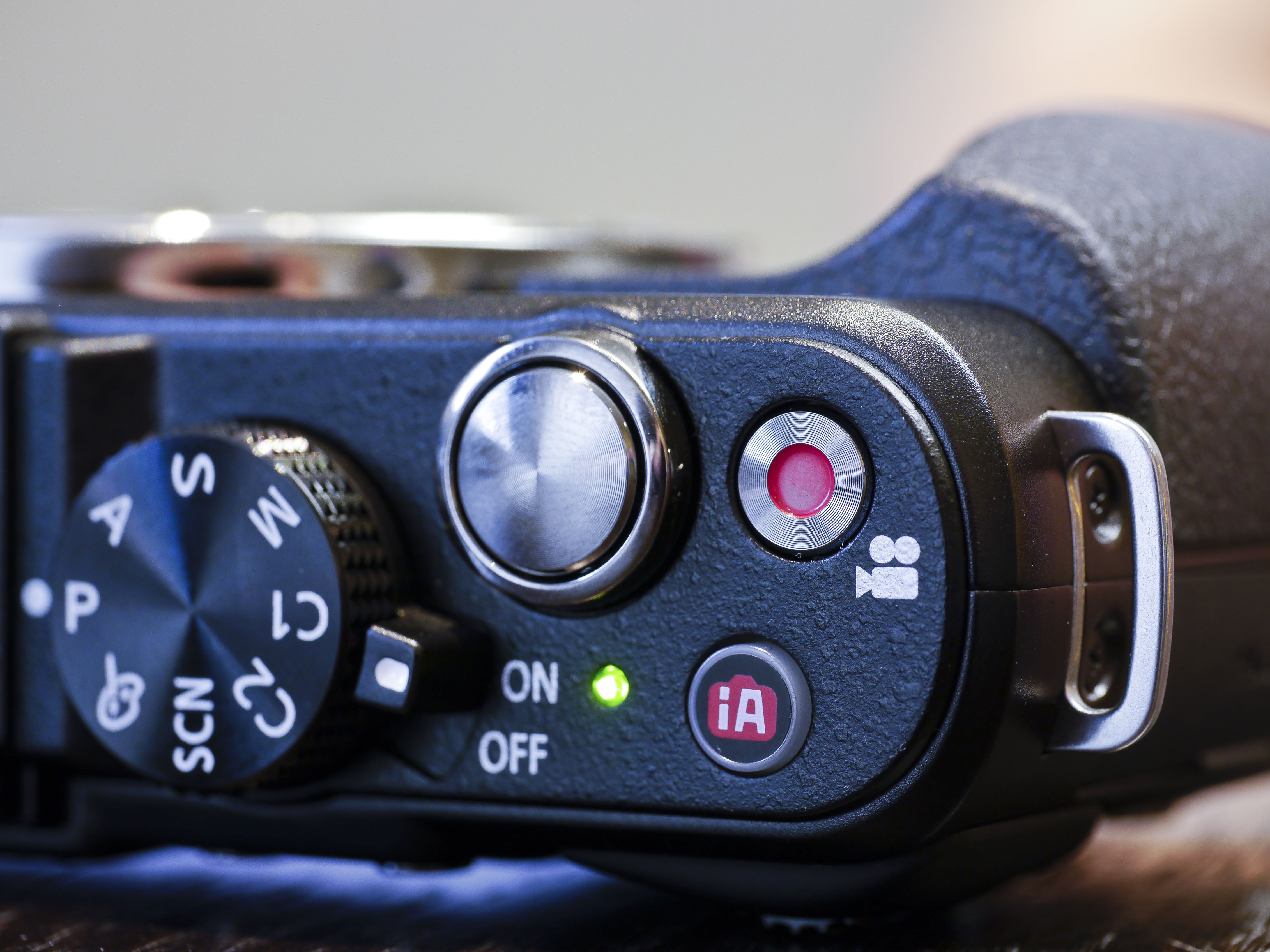
Alongside, there's a well-proportioned silver shutter release and chunky black metal mode dial. This dial is stocked with the full complement of manual shooting modes (Program, Shutter Priority, Aperture Priority and Manual), along with two customisable slots for you to store your favourite settings.
A further slot calls up a bank of 17 scene modes, represented by an array of colourful graphics on the LCD screen for you to select from. There are two Portrait modes – one offering skin softening – as well as Architecture, Sports, Objects, Illuminations and a couple of night scene modes, to name a few.
There's also a Peripheral Defocus mode, which enables you to select the area of the frame you want to stay sharp, then throws everything else out of focus, creating a shallow depth-of-field effect.
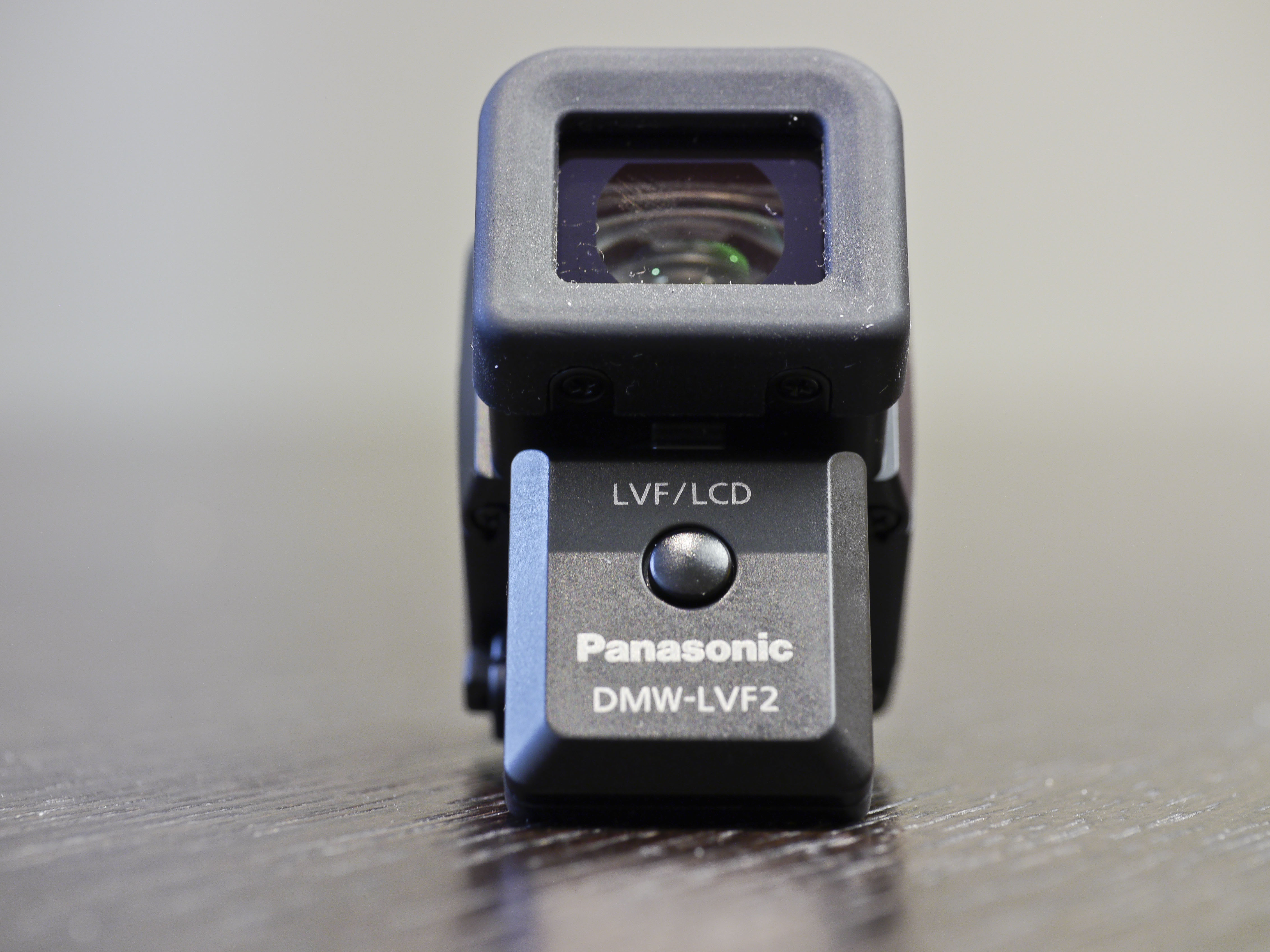
Finally, there are the Panasonic Lumix DMC-GX1's Creative Control options, which comprise Expressive, Retro, High Key, Low Key, Sepia, High Dynamic, Toy and Mini, with the latter two being our favourites.
Otherwise, there's a metal hotshoe for attaching accessories such as a flashgun or the optional, tiltable LVF2 viewfinder and stereo microphones. Plus there's a powerful, spring-loaded pop-up flash that sits high above the lens when activated. Usefully, the flash can also be tilted back and clipped into place, enabling you to bounce it off the ceiling for more natural-looking results.
Around the back there are four silver buttons arranged around the four-way pad, accessing the Q.Menu (Quick Menu) – for options such as image size/quality, metering and picture settings – Display options (including a virtual spirit level and live histogram), an AF/MF button, and a customisable Fn1 control.
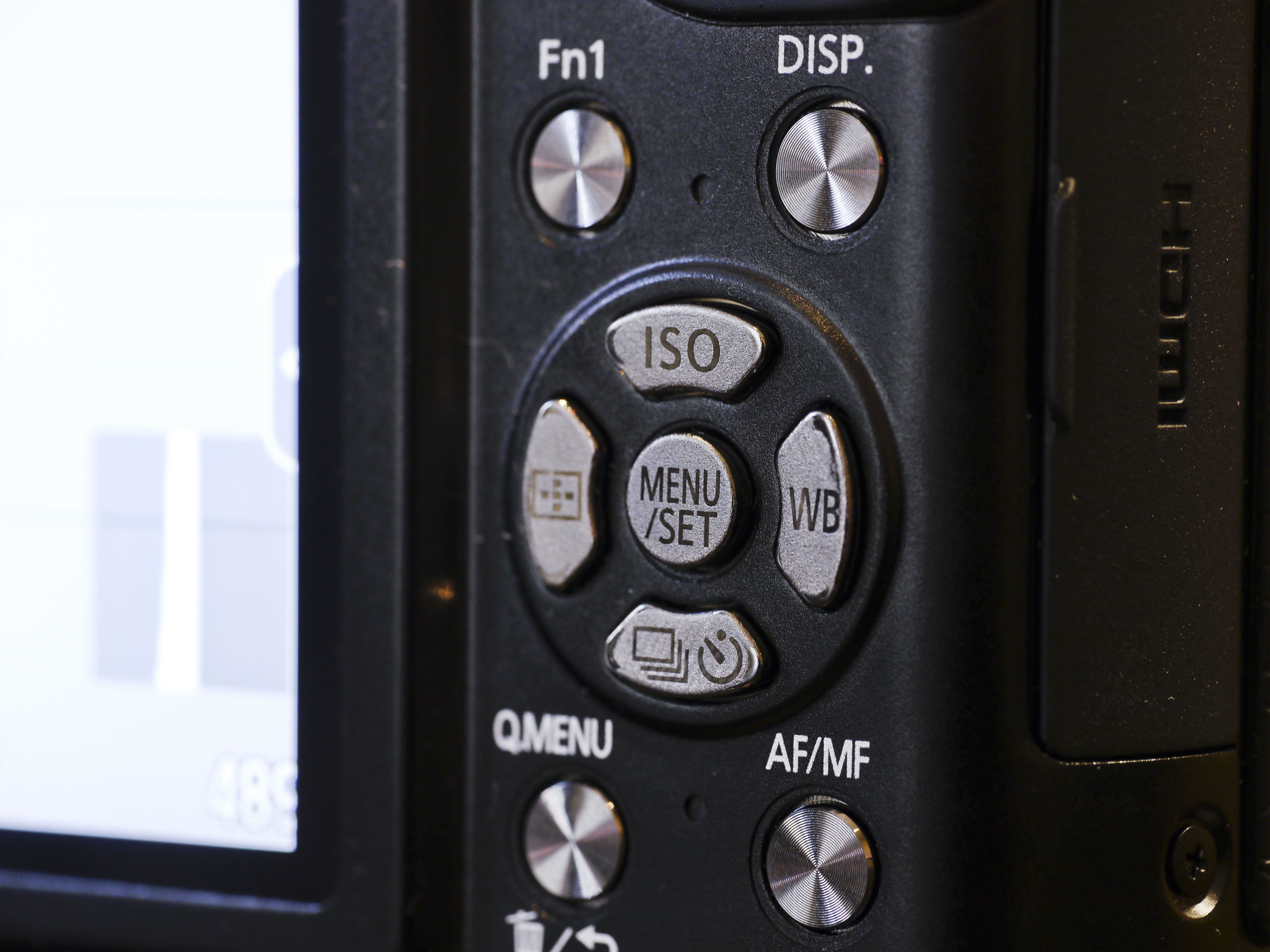
The directional keys on the navigation pad supply shortcuts to the camera's ISO, WB, Drive mode and AF options, with the latter providing choices that include Face Detection, AF Tracking, 23-area, 1-area and Pinpoint.
The central Set button doubles up as your entry point into the extensive menu system, which – although simple to navigate – is structured so that you often have to scroll through several pages of options to get to the one that you want.
Above the 3-inch LCD display there's a playback button, customisable AF/AE lock/Fn2 button and a further control to manually activate the pop-up flash.
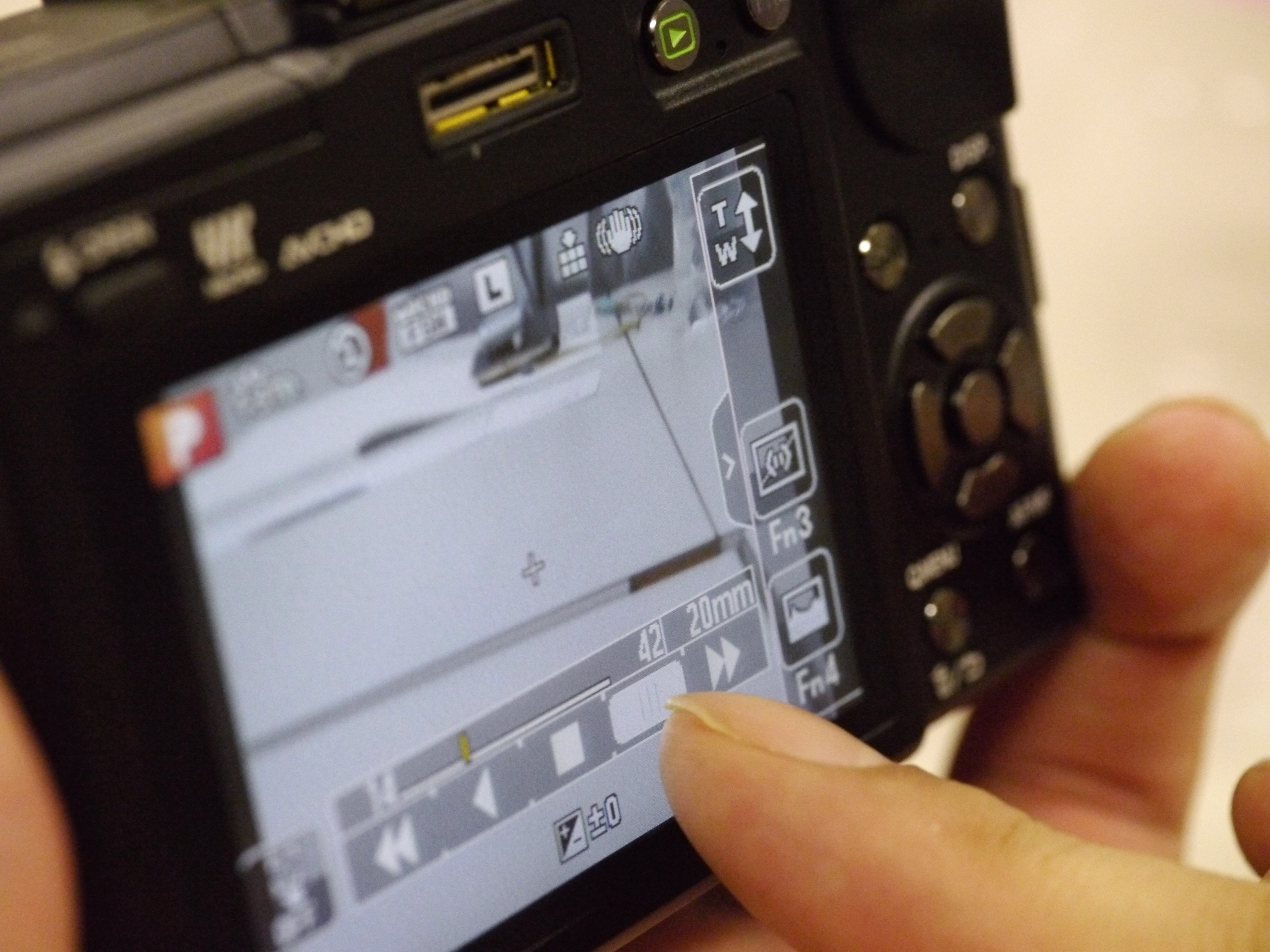
In addition to its physical controls, the Panasonic Lumix DMC-GX1 also offers touchscreen functionality. On the right-hand side of the screen there's a hidden menu: tap the icon on the screen and it emerges to reveal several interactive icons that offer an alternative means of operating the camera.
There's an on-screen slider control for adjusting the zoom and two customisable Fn icons for you to assign frequently used functions to.

There's also the facility to touch anywhere on the screen to set a focal point (Touch Focus) and the option of activating a Touch Shutter feature, which bypasses the need to use the shutter release. The screen is fairly responsive, but the fact that – occasionally – an option needed pressing several times before it would register, proves that there's still some room for improvement in terms of sensitivity.
It's not perfect, but the flexibility offered by having both physical controls and touchscreen options, as well as a decent array of customisable buttons and icons means that the Panasonic Lumix DMC-GX1 can be set up to suit your individual way of working.
As a result, the GX1 is simple to pick up and start shooting with right away: testament to the user-friendly nature of its interface.
